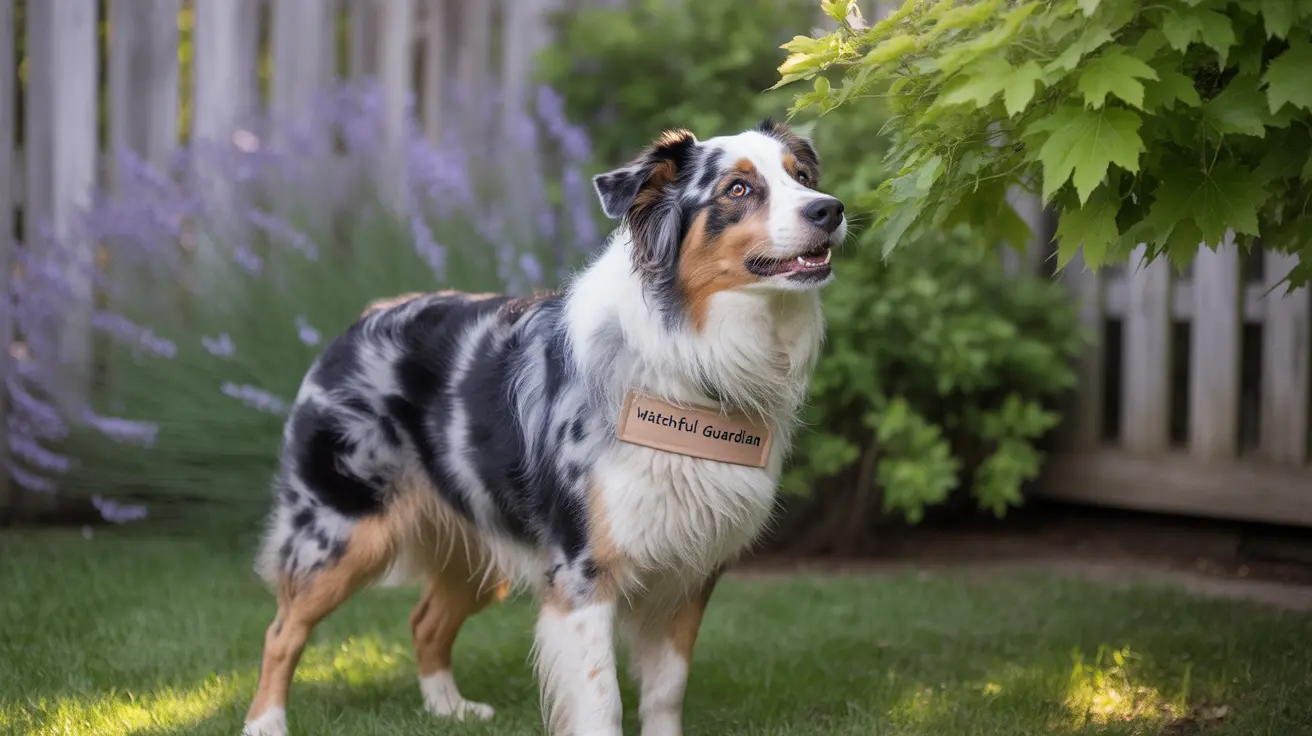Introduction
Many prospective dog owners wonder if Australian Shepherds can be guard dogs, given their intelligence and herding background. While these beautiful and versatile dogs possess natural protective instincts, their effectiveness as guard dogs requires a deeper understanding of their temperament, capabilities, and limitations. This comprehensive guide explores the protective nature of Australian Shepherds and what you can expect from them in terms of home and family security.
Natural Protective Instincts
Australian Shepherds were originally bred as herding dogs, developing a strong protective instinct toward their flock and family. This heritage translates into a natural vigilance and awareness of their surroundings, making them excellent watchdogs by default.
Their protective nature typically manifests through alerting behaviors rather than aggression. They'll bark to warn of potential threats and maintain a watchful eye over their territory, but rarely show unprovoked aggression.
Guard Dog Potential
While Australian Shepherds can be protective, they differ from traditional guard dog breeds in several ways. Their primary response to threats is usually to alert their owners through barking rather than engaging in physical confrontation.
These dogs excel at:
- Detecting unusual activity
- Warning through vocal alerts
- Maintaining vigilant watch
- Showing protective body language
Training Requirements
Developing an Australian Shepherd's protective instincts requires careful training and socialization. Early exposure to different people, environments, and situations is crucial for building a well-balanced guard dog.
Key training aspects include:
- Basic obedience training
- Socialization with various people and animals
- Command response training
- Boundary setting
- Professional protection training (if desired)
Exercise and Mental Stimulation
Australian Shepherds require substantial physical exercise and mental stimulation to channel their energy positively. Without adequate outlets, their protective instincts may manifest as problematic behaviors like excessive barking or herding family members.
Daily requirements typically include:
- 1-2 hours of physical exercise
- Mental enrichment activities
- Training sessions
- Interactive play
Socialization Importance
Proper socialization is critical for developing a balanced protective nature. Australian Shepherds need exposure to various situations during their formative months to distinguish between genuine threats and normal social interactions.
Family Integration
Australian Shepherds form strong bonds with their families, naturally extending their protective instincts to all household members. Their herding background makes them especially attentive to children, though this requires proper training to prevent unwanted herding behaviors.
Frequently Asked Questions
Can Australian Shepherds be trained to be effective guard dogs or are they mostly watchdogs?
Australian Shepherds are primarily natural watchdogs rather than guard dogs. While they can be trained for basic protection, they're more likely to alert through barking than engage in physical defense. Their effectiveness lies in their vigilance and warning capabilities rather than aggressive protection.
What kind of socialization and training do Australian Shepherds need to develop protective instincts without becoming aggressive?
Australian Shepherds need extensive early socialization with various people, animals, and environments. They require consistent obedience training, positive reinforcement, and clear boundaries to develop appropriate protective behaviors without aggression.
How do Australian Shepherds naturally behave toward strangers and potential intruders?
They typically display cautious alertness toward strangers, often barking to alert their owners of unfamiliar presences. While naturally reserved with newcomers, well-socialized Australian Shepherds shouldn't show aggression unless genuinely threatened.
What are the common challenges of raising an Australian Shepherd with guarding tendencies during adolescence?
During adolescence, Australian Shepherds may show increased territorial behavior, excessive barking, or overprotectiveness. Consistent training, proper socialization, and clear boundaries are essential during this developmental stage.
How important is daily exercise and mental stimulation for Australian Shepherds to control their protective and herding behaviors?
Daily exercise and mental stimulation are crucial for Australian Shepherds. Without adequate physical activity and mental engagement, they may channel their energy into excessive protective behaviors or destructive activities. At least 1-2 hours of daily exercise combined with mental challenges is recommended.
Conclusion
While Australian Shepherds may not be traditional guard dogs, their natural protective instincts, intelligence, and loyalty make them excellent watchdogs and family protectors. Success in developing their protective capabilities depends on proper training, socialization, and meeting their considerable exercise needs. With the right approach, these versatile dogs can provide both companionship and security for their families.






